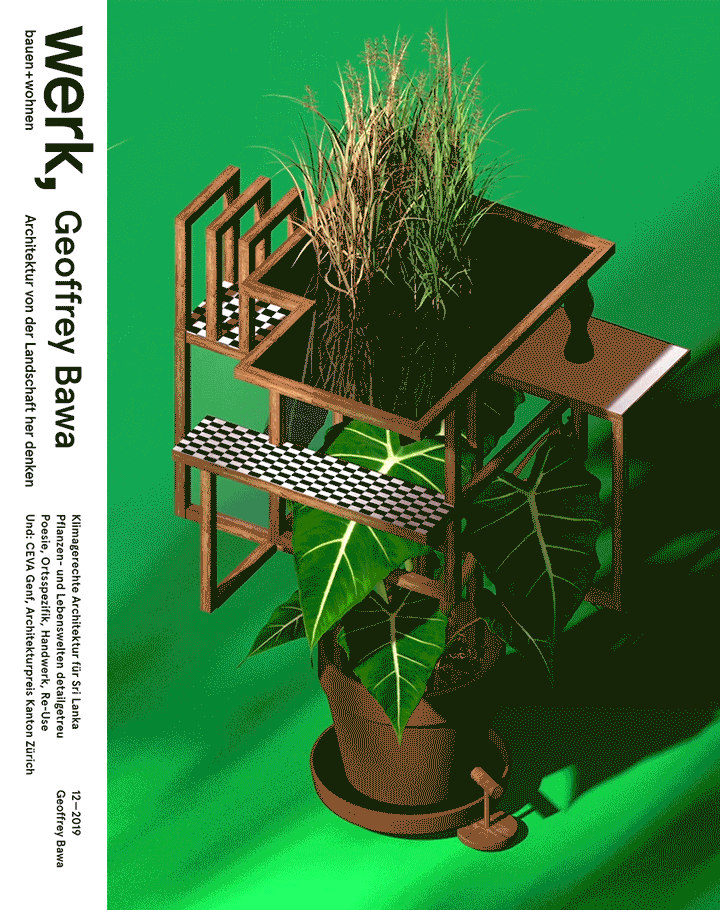werk, bauen + wohnen 12-2019

Creating Space, not Fetishizing about Form
Even ants have a hunger for architecture. This was something that Sri-Lankan architect Geoffrey Bawa (1919–2003) had to experience when in 1997 these beasts destroyed part of his archive, including beautiful pen-and-ink drawings. Bawa had a further part of collection burnt. It is thanks to David Robson, Bawa’s chronicler and guest editor of this issue, that a number of drawings could be saved – a group of them is gathered here.
They make very evident the great care and attention that Bawa devoted to the landscape situation of his projects: rocks, plants and trees are accurately recorded in terms of size, position and form. Quite often colossal plants form an important part of his building sites and are therefore central elements in the design, they shape the space, like buildings.
In addition to his obsession with the landscape context, Bawa worked like a scenographer and presented buildings, trees or boulders in the surroundings. He concentrated on paths, views, spatial relationships – an echo of his studies in England. In his own garden in Lunuganga this way of thinking is evident in a number of orchestrated sequences. The space created is always the focus, not the architectural object. Bawa was a space-maker, not a form-maker, as David Robson succinctly puts it in a discussion.
This feeling for the place and qualities inherent in it, for local material and handcraft guided Bawa’s creative work. It is hardly surprising that air conditioning appliances are rarely used in his buildings. Through employing natural ventilation for spaces, wide projecting roofs, active use of rainwater or vertical planting Bawa was a pioneer of bioclimatic architecture. The present issue draws a portrait of this, using eight completed buildings, all of which are in Sri Lanka. Despite this apparently local restriction his work and his way of thinking exert an influence that extends far beyond Asia.
Our thanks are due to David Robson who wrote the texts and opened doors for this issue. Special mention should be made of Sebastian Posingis who photographed the buildings. We also wish to thank the archive, the Geoffrey Bawa Trust for its support, and Jeff Bourke, who digitalized the set of 100 drawings. — Roland Züger